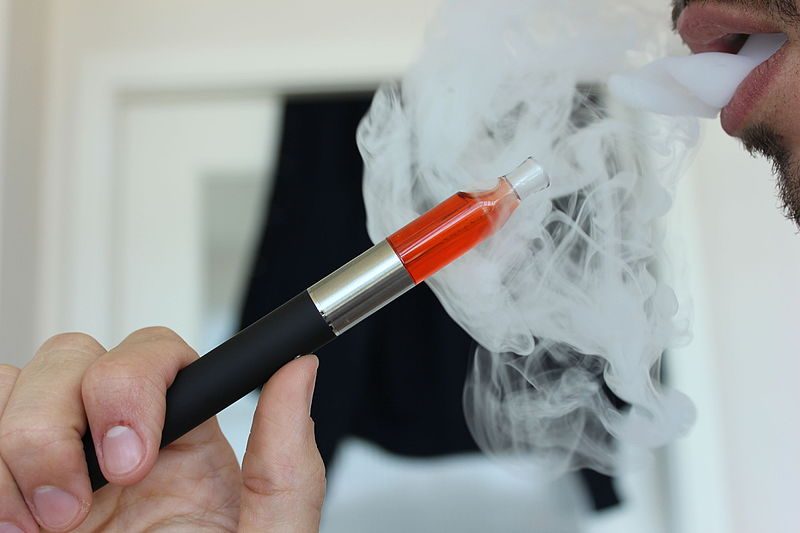On September 11, 2019, President Trump announced an impending ban on all e-cigarette flavors. The ban was announced as a response to rising concerns regarding underage vaping. Health and Human Services Secretary Alex Azar followed up providing details of the intended ban. Specifically, the plan was to ban all e-cigarette flavors except for tobacco flavors. Azar added that if kids were found to be using tobacco flavored vapes, then he would ban those as well.

Just two days later, the President appeared to backtrack on the idea of a flavor ban. In a Tweet, he indicated that he liked vaping as an alternative to cigarettes but suggested getting counterfeits off the market to protect kids. In the months since then, the back and forth between vaping advocates and opponents has intensified. Several members of Congress are pressuring the White House to follow through with the ban. At the same time, vaping advocates have organized to oppose a ban.
The stand-off led to a November 22 White House meeting that included Tobacco-Free Kids, who are demanding a flavor ban, a representative of the American Vaping Association, who opposes a flavor ban, and several other similar stakeholders. Big Tobacco had a seat at the table as well. JUUL was there. However, perhaps surprisingly, Big Tobacco and JUUL are not exactly leading the charge to save vaping flavors.
JUUL said that they had already pulled all of their flavors and would comply with whatever the FDA decided. They did not attempt to make a case to preserve e-cigarette flavors. Some industry analysts claim that JUUL’s lack of interest in defending flavors is because the company has been the target of a flood of negative publicity. Largely because of how popular JUUL is with underage kids. In fact, the term “JUULing” evolved from kids using JUUL products in high schools. But there is another reason why JUUL and Big Tobacco are not particularly concerned about a ban of vape flavors.
Vaping Industry Split In Two
The vaping industry is split into two main segments. On one side there is JUUL and the other Big Tobacco brands like Blu and Vuse. The Big Tobacco e-cig companies are the heavyweights. On the other side, there are independent American e-cig brands like NJOY, the Mig Vapor online vape store, and dozens of companies like Beard Vape that specialize in producing e-liquids. Also on the independent side are tens of thousands of vape shops that typically sell imported e-cig hardware products and American e-liquids.
The e-cigarettes sold in major retailers, c-stores, and gas stations tend to be the Big Tobacco affiliated brands. Big Tobacco has the distribution networks and clout to put their vapor products on the shelves right beside their cigarettes. The independent American e-cig and e-liquid companies do not have that kind of power. As a result, the two segments of the vapor industry tend to operate independently of each other.
Unfortunately for the independent companies, they tend to be lumped in with the Big Tobacco companies. Critics and opponents of vaping commonly refer to the entire vapor industry as an extension of Big Tobacco. But that is not the case. And a ban of vape flavors could wipe out the independent segment and leave Big Tobacco the spoils.
How Big Tobacco Wins A Flavor Ban
Vape flavors are of vital importance to independent companies and their customers. The FDA collected data from 70,000 adult vapers who affirmed that flavors are critical in helping them not relapse to smoking cigarettes. It is estimated that there are at least 100,000 jobs in the independent vaping industry. Without flavors, vape shops and independent companies would be forced to close. In fact, this is already happening in states where flavor bans have already been passed.
Conversely, the Big Tobacco brands already have only a few SKUs but are able to get their products into over 300,000 retail locations including c-stores and gas stations. In addition, the Big Tobacco vapor products tend to be the cheaper, high-nicotine devices that have helped trigger the teen vaping crisis.
Independent American companies and vape shops cannot survive with only two SKUs. If only tobacco and menthol flavors are allowed on the market, the Big Tobacco brands sold in the corner store will not be affected. It is the vape shops, the e-liquid companies, and independent e-cig brands that will be wiped out. That will leave adult tobacco consumers with only two choices for tobacco products. Buy the Big Tobacco high-nicotine e-cigs from the corner store, or buy cigarettes.
As well-intentioned as opponents of vaping might be, a blanket ban of vape flavors does not combat Big Tobacco’s high-nicotine vape products. Instead, a vape flavor ban will leave Big Tobacco unscathed while wiping out the independent American vape companies. In other words, an e-cig flavor ban will help Big Tobacco by wiping out the competition.

